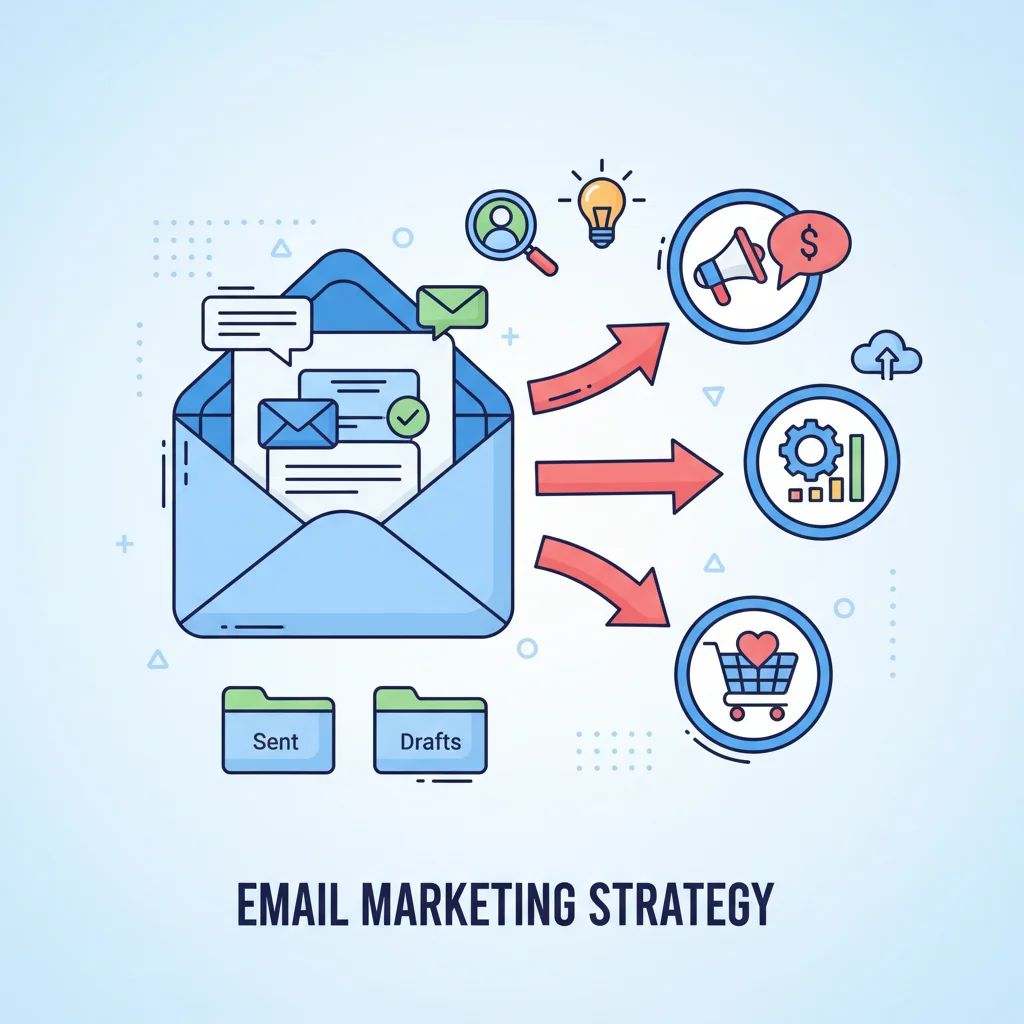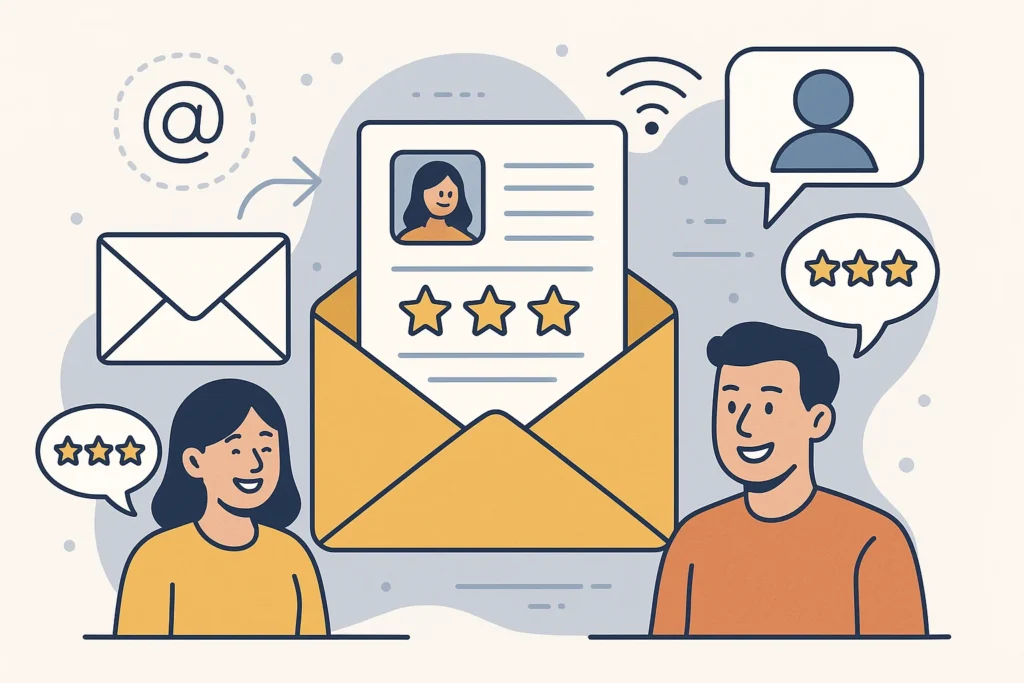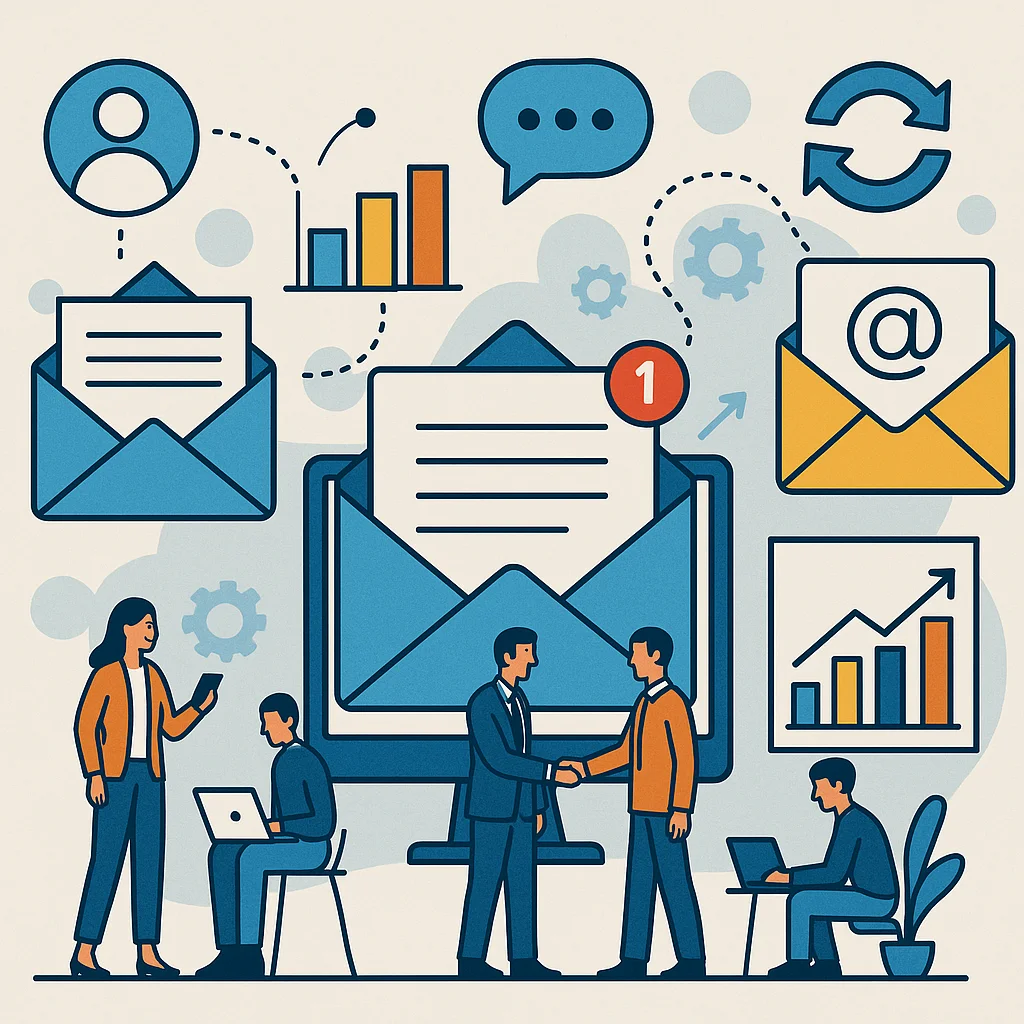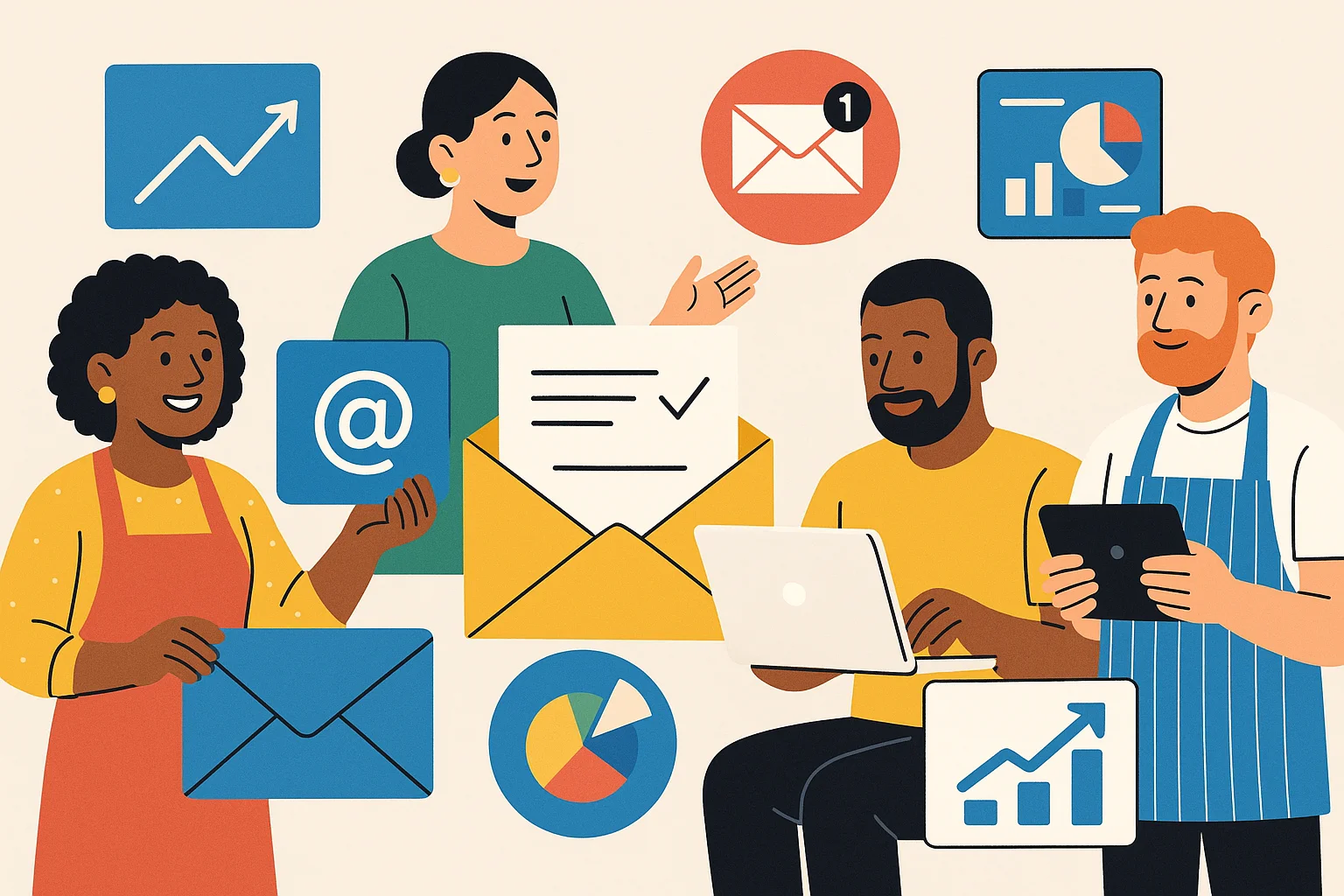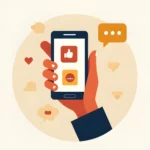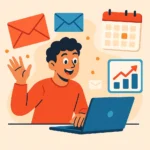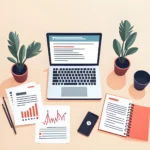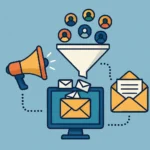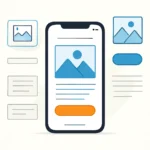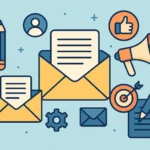Now Reading: Boost Your Bottom Line: Use Email Marketing to Increase Sales
-
01
Boost Your Bottom Line: Use Email Marketing to Increase Sales
Boost Your Bottom Line: Use Email Marketing to Increase Sales
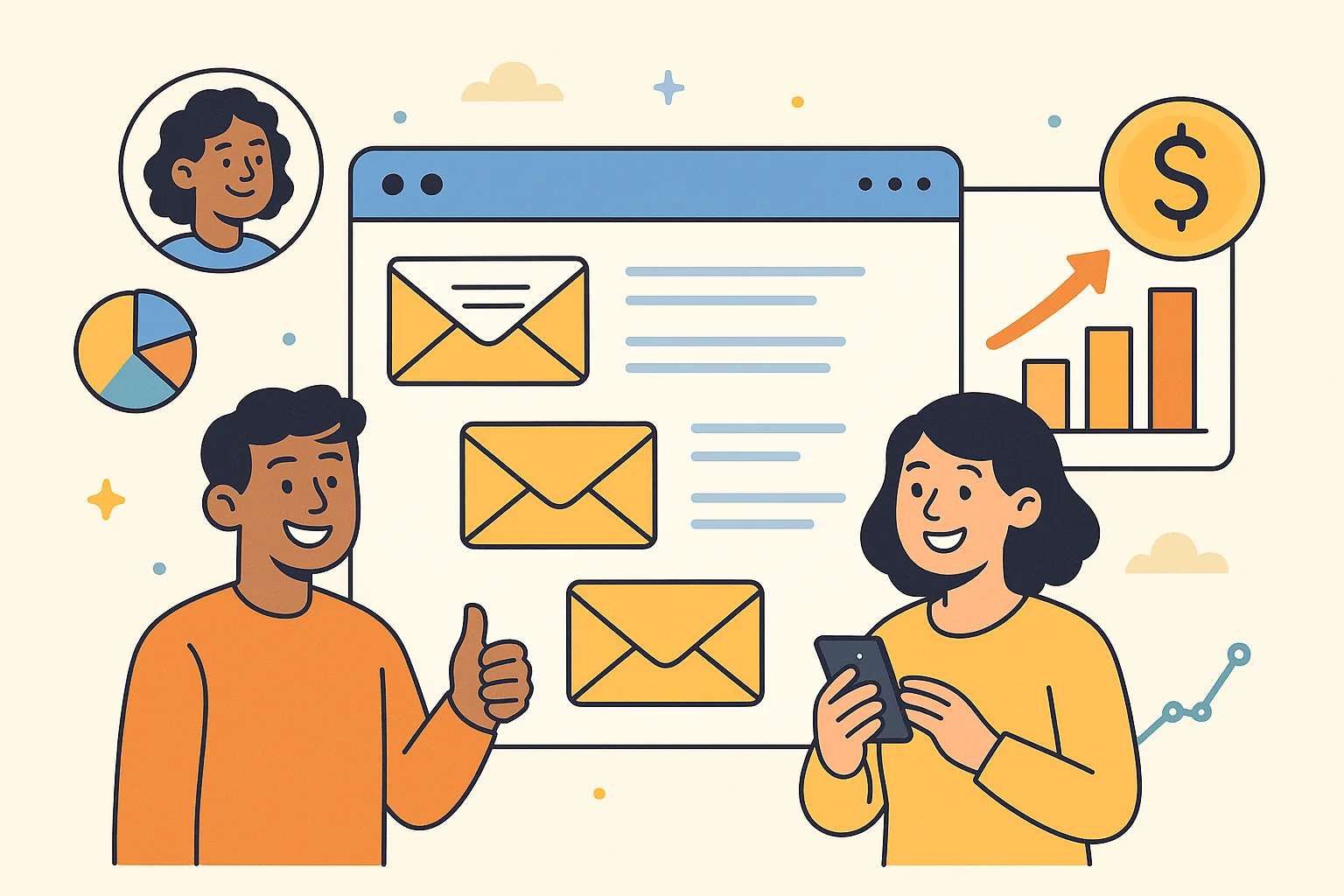
Your email list is growing, but your sales aren’t. The problem? You’re collecting addresses but not converting subscribers. It’s frustrating watching all that potential revenue slip through your fingers while your carefully crafted emails sit unopened or, worse, ignored. The agony of low conversion rates keeps you up at night. But there’s hope. Learning how to use email marketing to increase sales isn’t rocket science – it’s about strategy, personalization, and timing. And I’m about to show you exactly how to make it happen.
Key Takeaways
- Segment your audience based on behavior, interests, and purchase history to send targeted emails that resonate with specific customer groups
- Create compelling subject lines using personalization, urgency, and curiosity to boost open rates by up to 26%
- Implement automated email workflows beyond basic promotional campaigns, including welcome series, abandoned cart reminders, and post-purchase follow-ups
- Use proven copywriting frameworks like PAS (Problem-Agitation-Solution) and FAB (Features-Advantages-Benefits) to craft persuasive email content
- Incorporate personalization throughout your emails – not just in the greeting – to increase relevance and drive conversions
- Test different send times and frequencies to find the optimal schedule for your specific audience
- Include clear, compelling CTAs that tell readers exactly what action to take next
Building Your Email Foundation For Sales Success
Before you can use email marketing to increase sales, you need a solid foundation. Let’s break down the essential building blocks:
Create a targeted email list
Your email list is the engine that powers your sales machine. But size isn’t everything – quality trumps quantity every time.
Building a targeted list means collecting addresses from people genuinely interested in what you offer. These folks are waaaaay more likely to convert into customers than random subscribers who signed up for a freebie and forgot about you.
Here’s how to build a quality list:
- Offer valuable lead magnets that solve specific problems for your ideal customers
- Use sign-up forms strategically placed on your website (especially high-traffic pages)
- Create landing pages dedicated to list building
- Leverage social media to direct interested followers to your sign-up forms
- Consider using pop-ups with compelling offers (but don’t be annoying about it)
One performance running shoe brand I follow offers special discounts to new subscribers, creating immediate value and setting the stage for future purchases. Smart move.
Segment your audience for targeted messaging
Segmentation is the secret sauce that transforms ordinary email marketing into a sales-generating machine. When you segment your list, you’re essentially grouping subscribers based on specific criteria so you can send more relevant messages.
According to research from Campaign Monitor, segmented email campaigns can lead to a 760% increase in revenue. That’s bananas!
Some effective ways to segment your list:
- Purchase history: What they’ve bought, how much they’ve spent, and when they last purchased
- Engagement level: How often they open emails, click links, or visit your website
- Demographics: Age, location, gender, job title, etc.
- Interests and preferences: Product categories they’ve shown interest in
- Position in the sales funnel: New subscribers vs. loyal customers vs. inactive users
I recently ran an experiment with segmentation. I sent identical emails to both a general list and a segmented list (based on interest). The general list got a 42% open rate and 4.5% click-through rate. Pretty decent, right?
But the segmented list? A whopping 94% open rate and 38% click-through rate! The difference was night and day.
Useful Articles:
Crafting Emails That Convert
Now that you’ve got your foundation in place, let’s talk about creating emails that actually drive sales.
Write subject lines that get opened
Your subject line is like the headline of a newspaper – if it doesn’t grab attention, nobody reads the story. According to research, personalized subject lines can increase open rates by 26%.
Here are some high-performing subject line strategies:
- Use personalization: Include the recipient’s name or reference their specific interests
- Create urgency: “Last chance” or “Ending soon” can motivate quick action
- Ask questions: Spark curiosity with thought-provoking questions
- Use numbers: “5 ways to…” or “Save 30% today” stand out in crowded inboxes
- Keep it short: Aim for 40-50 characters so it displays fully on mobile devices
Some top-performing subject line keywords include:
- “thank you”
- “new”
- “introducing”
- “exclusive”
- “limited time”
- “available”
- “free delivery”
Avoid spam triggers like ALL CAPS, excessive punctuation (!!!), or too many promotional words that might send your email straight to the junk folder.
Design emails for maximum impact
The visual appeal of your emails matters, but functionality matters more. Your emails should look good AND work well across all devices.
Some design best practices:
- Mobile optimization: Over 60% of emails are opened on mobile devices, so make sure your design looks great on small screens
- Clean layout: Use white space effectively and avoid cluttered designs
- Branded elements: Maintain consistent colors, fonts, and visual style with your overall brand
- Strategic imagery: Use high-quality images that enhance your message (but don’t rely solely on images)
- Scannable content: Use headers, bullet points, and short paragraphs for easy reading
Remember that fancy designs mean nothing if they distract from your message or slow down loading times.
Use proven copywriting frameworks
Don’t start writing emails from scratch! Use proven copywriting frameworks to structure your messages for maximum impact.
Here are some effective frameworks:
PAS (Problem-Agitation-Solution)
This framework works because people are more motivated to avoid pain than seek pleasure.
- Problem: Identify a specific pain point your audience experiences
- Agitation: Amplify the consequences of not solving the problem
- Solution: Present your product or service as the logical answer
FAB (Features-Advantages-Benefits)
This framework connects product attributes to customer outcomes:
- Features: What your product or service does
- Advantages: Why those features are helpful
- Benefits: How they improve the customer’s life
AIDA (Attention-Interest-Desire-Action)
This classic framework guides readers through a psychological journey:
- Attention: Grab their attention with a bold statement or question
- Interest: Build interest with compelling information
- Desire: Create desire by highlighting benefits
- Action: Ask for a specific action (your CTA)
Before-After-Bridge
This framework paints a picture of transformation:
- Before: Describe their current situation with the problem
- After: Show them what life looks like after solving the problem
- Bridge: Explain how your product helps them get from before to after
Email Marketing Strategies That Drive Sales
Now let’s dive into specific strategies to use email marketing to increase sales.
Welcome series for new subscribers
First impressions matter! A welcome series introduces new subscribers to your brand and starts building the relationship that leads to sales.
Your welcome series might include:
- Email 1: Thank them for subscribing and set expectations
- Email 2: Share your brand story and values
- Email 3: Highlight your best products or most popular content
- Email 4: Offer a special discount or incentive for first-time buyers
Start slowly with your welcome series. Express appreciation, set expectations for email frequency, and provide immediate value. This builds trust from day one.
Abandoned cart recovery emails
With cart abandonment rates averaging around 70%, recovery emails are essential for reclaiming lost sales.
An effective abandoned cart sequence might include:
- Email 1 (1 hour after abandonment): “Did you forget something?” Remind them what’s waiting
- Email 2 (24 hours later): Address potential objections and offer support
- Email 3 (3 days later): Create urgency with a limited-time discount
These emails can recover between 3% and 14% of lost sales – revenue that would otherwise disappear.
Post-purchase follow-ups
The sale isn’t the end – it’s the beginning of a relationship that can lead to repeat purchases and referrals.
Your post-purchase sequence might include:
- Order confirmation: Thank them and provide order details
- Shipping notification: Update them on delivery status
- Delivery follow-up: Check if everything arrived as expected
- Product usage tips: Help them get maximum value from their purchase
- Review request: Ask for feedback after they’ve had time to use the product
- Cross-sell recommendations: Suggest complementary products based on their purchase
Promotional campaigns that convert
Promotional emails announce sales, special offers, and new products. They’re direct revenue generators when done right.
Tips for effective promotional emails:
- Clear value proposition: Make the benefit obvious immediately
- Sense of urgency: Limited-time offers encourage immediate action
- Focused messaging: Highlight ONE main offer rather than multiple promotions
- Strong visuals: Show the products in action or highlight the discount visually
- Simple path to purchase: Make the buying process as frictionless as possible
Re-engagement campaigns for inactive subscribers
Don’t give up on subscribers who’ve gone cold! Re-engagement campaigns can win back inactive subscribers and turn them into customers again.
Your re-engagement sequence might include:
- “We miss you” email: Acknowledge their absence and invite them back
- Feedback request: Ask why they haven’t engaged recently
- Special offer: Provide an incentive to return
- Last chance: Let them know you’ll remove them from your list if they don’t engage
Useful Articles:
Advanced Tactics To Supercharge Your Email Sales
Ready to take your email marketing to the next level? These advanced tactics can help you squeeze even more sales from your list.
Personalization beyond the first name
True personalization goes way beyond “Hey [First Name].” It’s about delivering relevant content based on individual behavior and preferences.
Advanced personalization includes:
- Product recommendations based on browsing or purchase history
- Content tailored to specific interests or pain points
- Timing emails based on individual engagement patterns
- Dynamic content blocks that change based on subscriber data
One study found that personalized emails deliver 6x higher transaction rates. That’s because relevant messages feel less like marketing and more like helpful communication.
Automated workflows and triggers
Automation lets you send the right message at exactly the right time without manual intervention.
Some powerful automated workflows include:
- Birthday or anniversary emails with special offers
- Replenishment reminders when it’s time to reorder consumable products
- Browse abandonment emails for products viewed but not purchased
- Price drop alerts for items on wishlists
- Back-in-stock notifications for previously unavailable items
These automated messages feel timely and relevant because they’re triggered by specific customer actions or milestones.
A/B testing for continuous improvement
Never assume you know what will work best – test it! A/B testing lets you compare different elements to see what drives more sales.
Elements worth testing include:
- Subject lines: Test length, personalization, questions vs. statements
- Send times: Morning vs. afternoon, weekday vs. weekend
- CTA buttons: Test colors, placement, and wording
- Email length: Short and sweet vs. detailed information
- Images: Product photos vs. lifestyle images vs. no images
Even small improvements can significantly impact your bottom line when applied across your entire list.
Interactive elements to boost engagement
Static emails are so last decade. Interactive elements can significantly increase engagement and, ultimately, sales.
Consider adding:
- Polls or surveys: Get feedback while increasing engagement
- Countdown timers: Create urgency for limited-time offers
- Image carousels: Showcase multiple products without cluttering the email
- Animated buttons: Draw attention to your CTA
- In-email shopping: Let subscribers browse and buy without leaving their inbox
These interactive elements make your emails more engaging and memorable, increasing the likelihood of conversion.
Optimizing Your Email Campaigns For Maximum Sales
Now let’s fine-tune your approach to squeeze every possible sale from your email campaigns.
Frequency and timing
Finding the right balance with email frequency is tricky. Too many emails can annoy subscribers and lead to unsubscribes. Too few can make them forget about you.
The sweet spot varies by industry and audience, but here are some guidelines:
- Test different frequencies with segments of your list
- Monitor engagement metrics closely when adjusting frequency
- Consider sending at different times based on subscriber behavior
- Increase frequency during key selling periods (like holidays)
- Decrease frequency for less engaged subscribers
Some studies suggest Tuesday, Wednesday, and Thursday tend to have higher open rates, but your audience might be different. Test to find your optimal sending times.
Mobile optimization
With most emails now opened on mobile devices, mobile optimization isn’t optional – it’s essential for sales.
Mobile optimization checklist:
- Responsive design that adapts to any screen size
- Single-column layouts for easier mobile reading
- Large, touch-friendly buttons (at least 44×44 pixels)
- Concise copy that gets to the point quickly
- Fast-loading images optimized for mobile connections
- Preview your emails on multiple devices before sending
A poor mobile experience can kill conversions instantly. Don’t let technical issues cost you sales.
Clear, compelling CTAs
Your call-to-action is where the rubber meets the road. It should be impossible to miss and irresistible to click.
CTA best practices:
- Use action-oriented language: “Shop Now,” “Get 20% Off,” “Claim Your Discount”
- Create contrast: Make your CTA button stand out visually
- Position strategically: Place primary CTAs above the fold when possible
- Limit options: One primary CTA per email works best
- Create urgency: Add time-limited language when appropriate
Remember that your CTA should tell readers exactly what will happen when they click. Clarity beats cleverness every time.
Start implementing these strategies today, and you’ll see firsthand how effective you can use email marketing to increase sales for your business. Your inbox is waiting to become your most profitable marketing channel!


